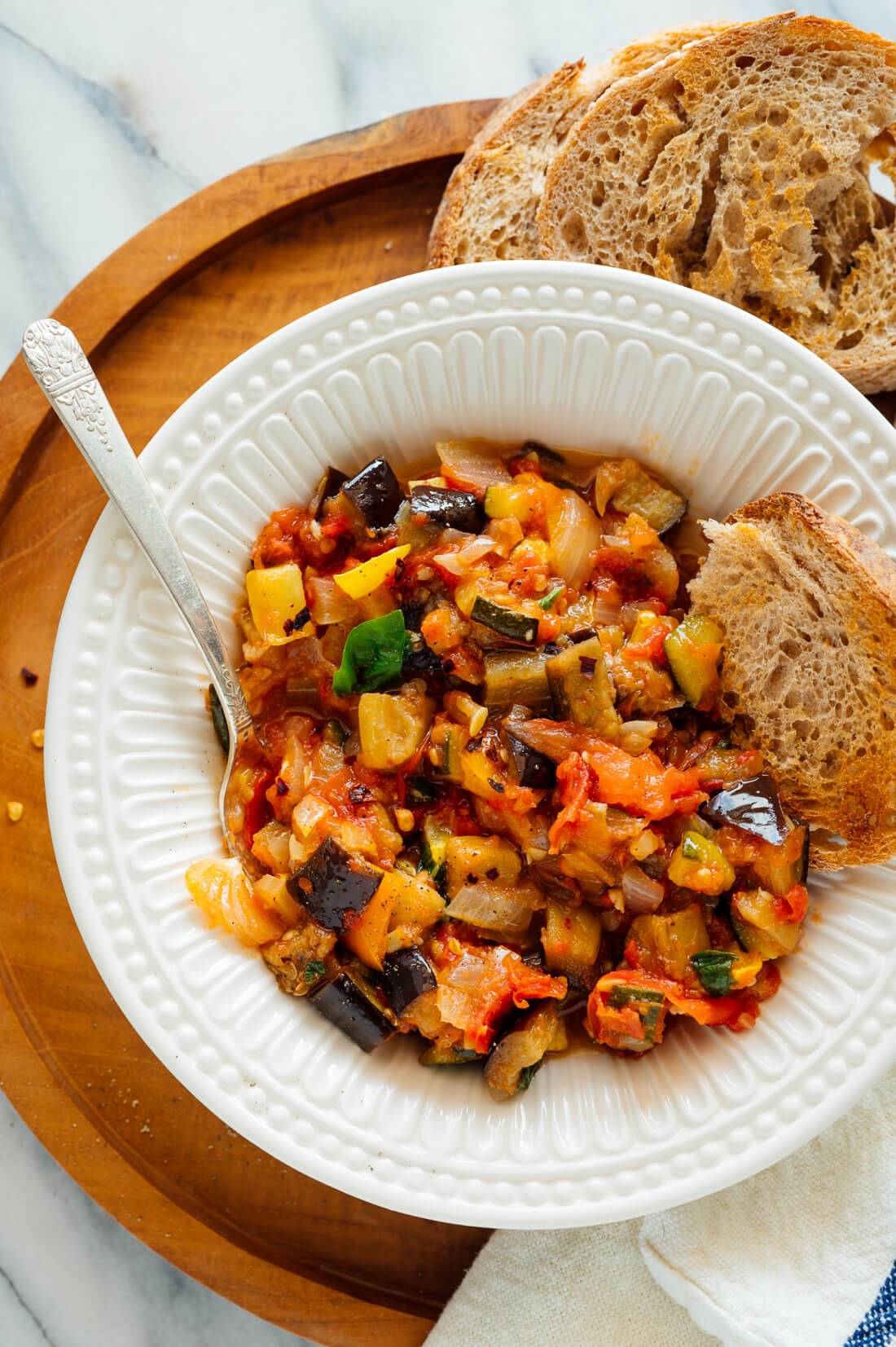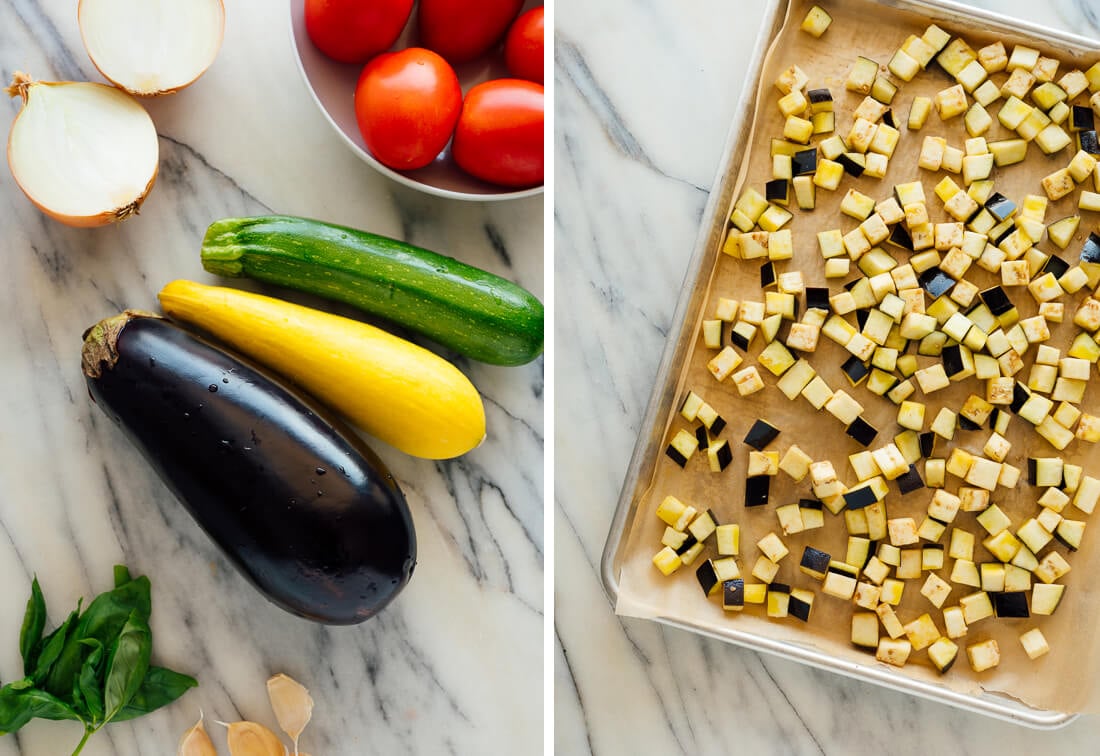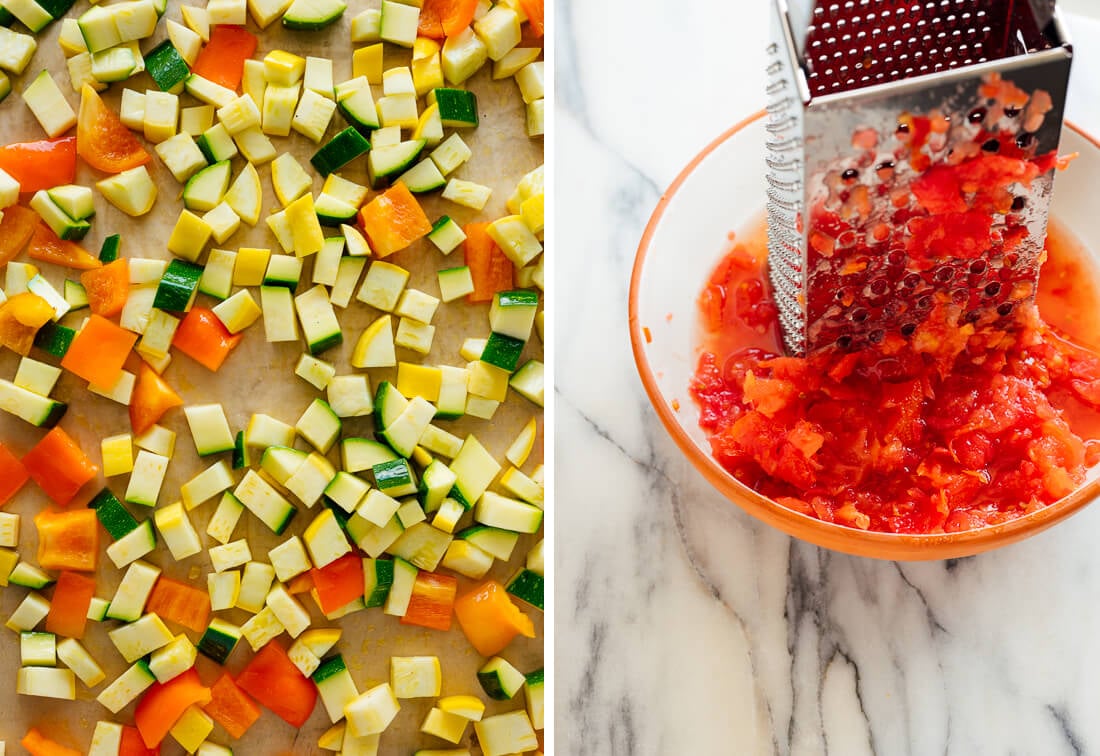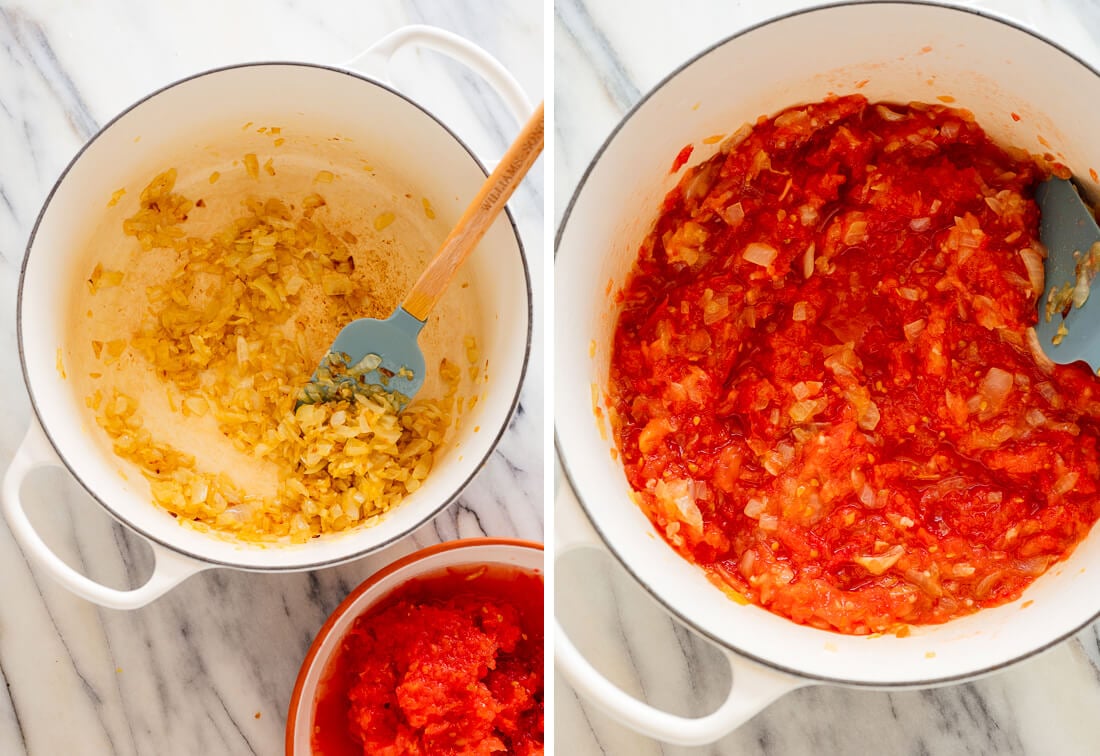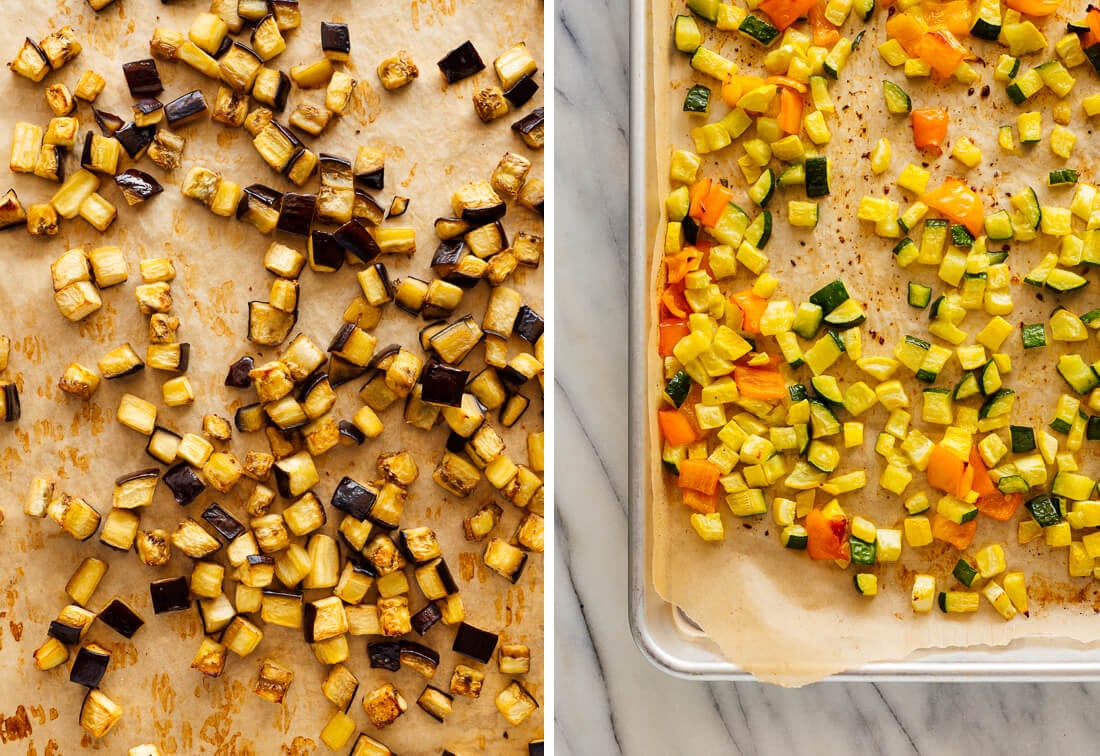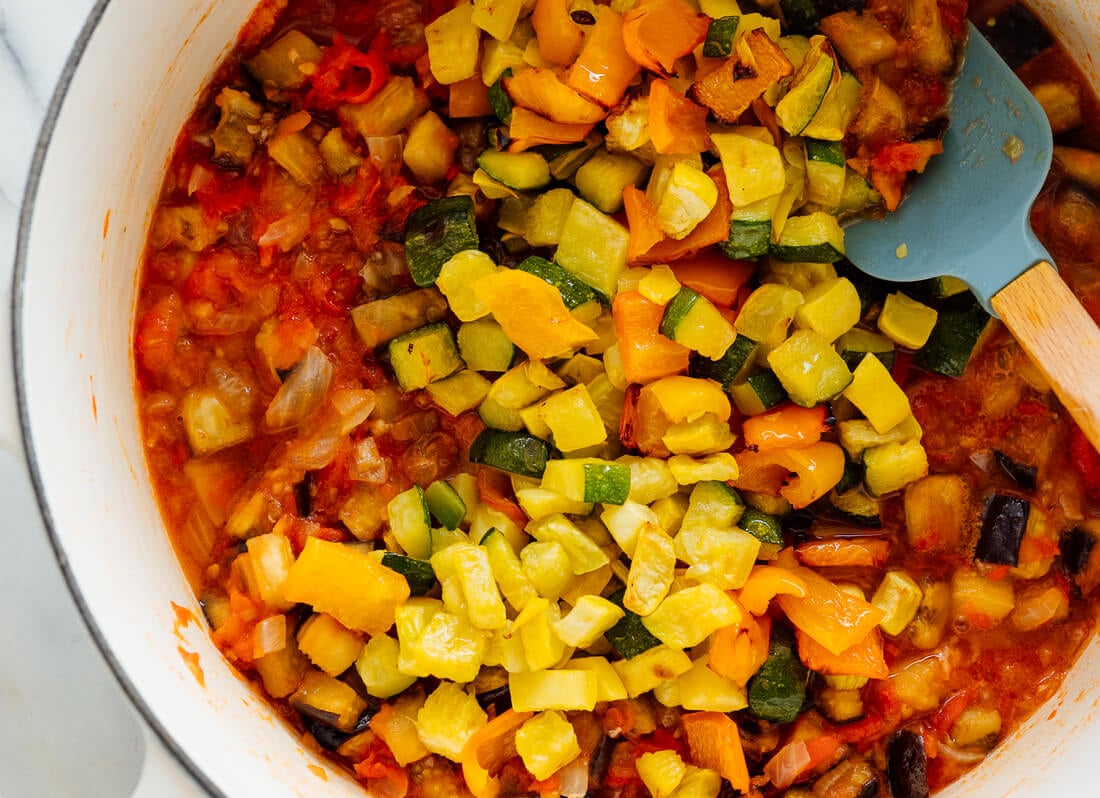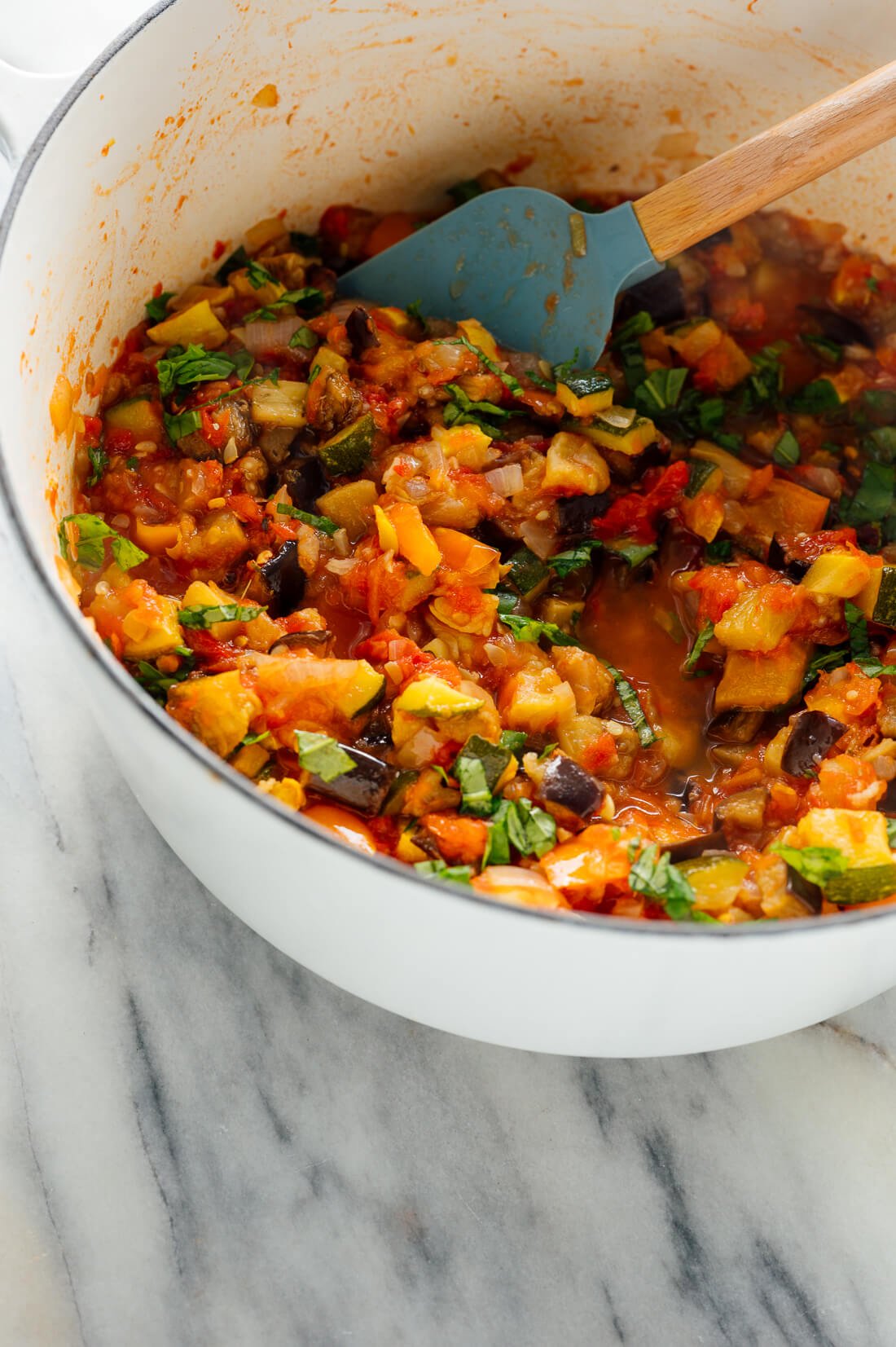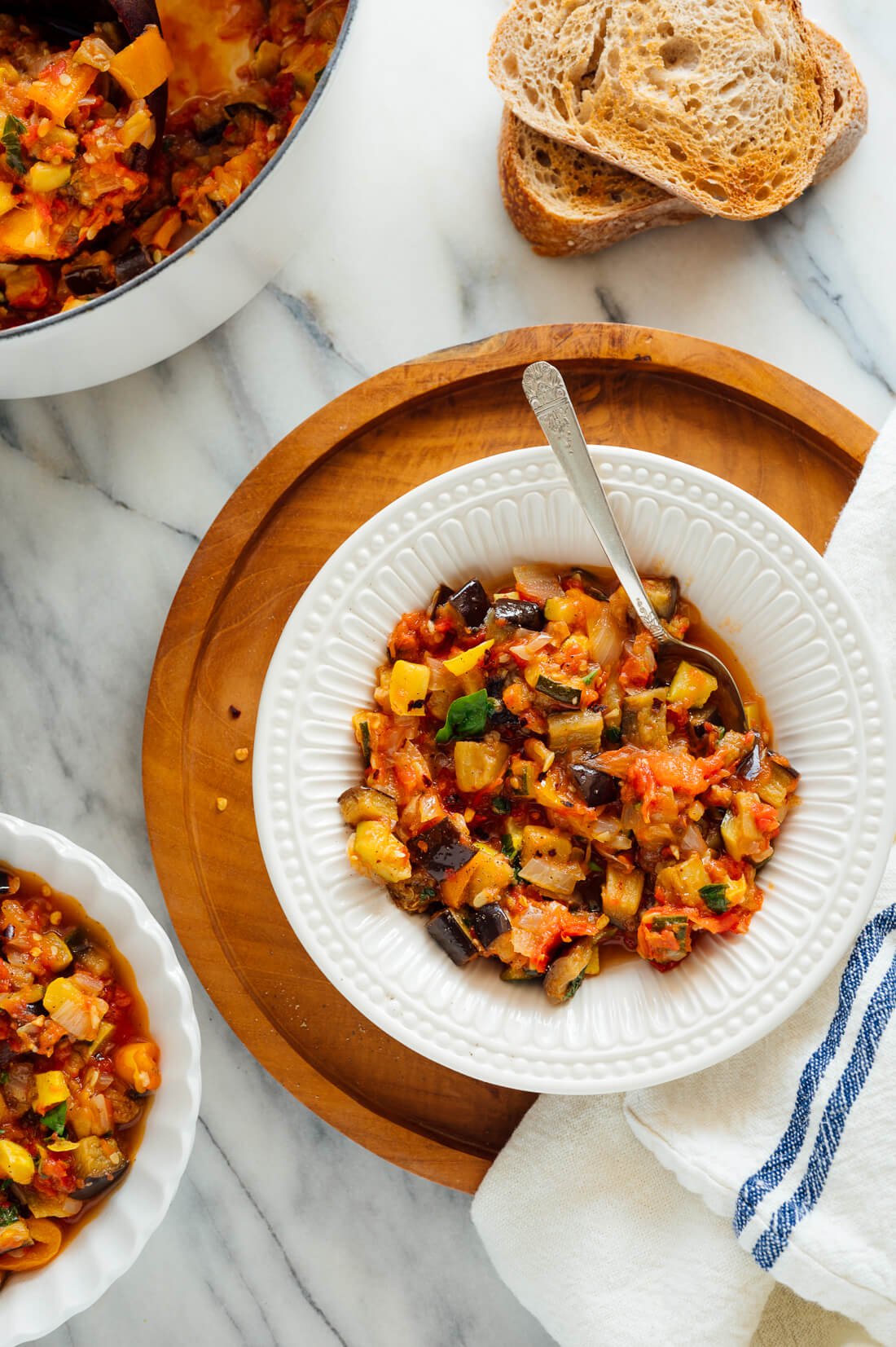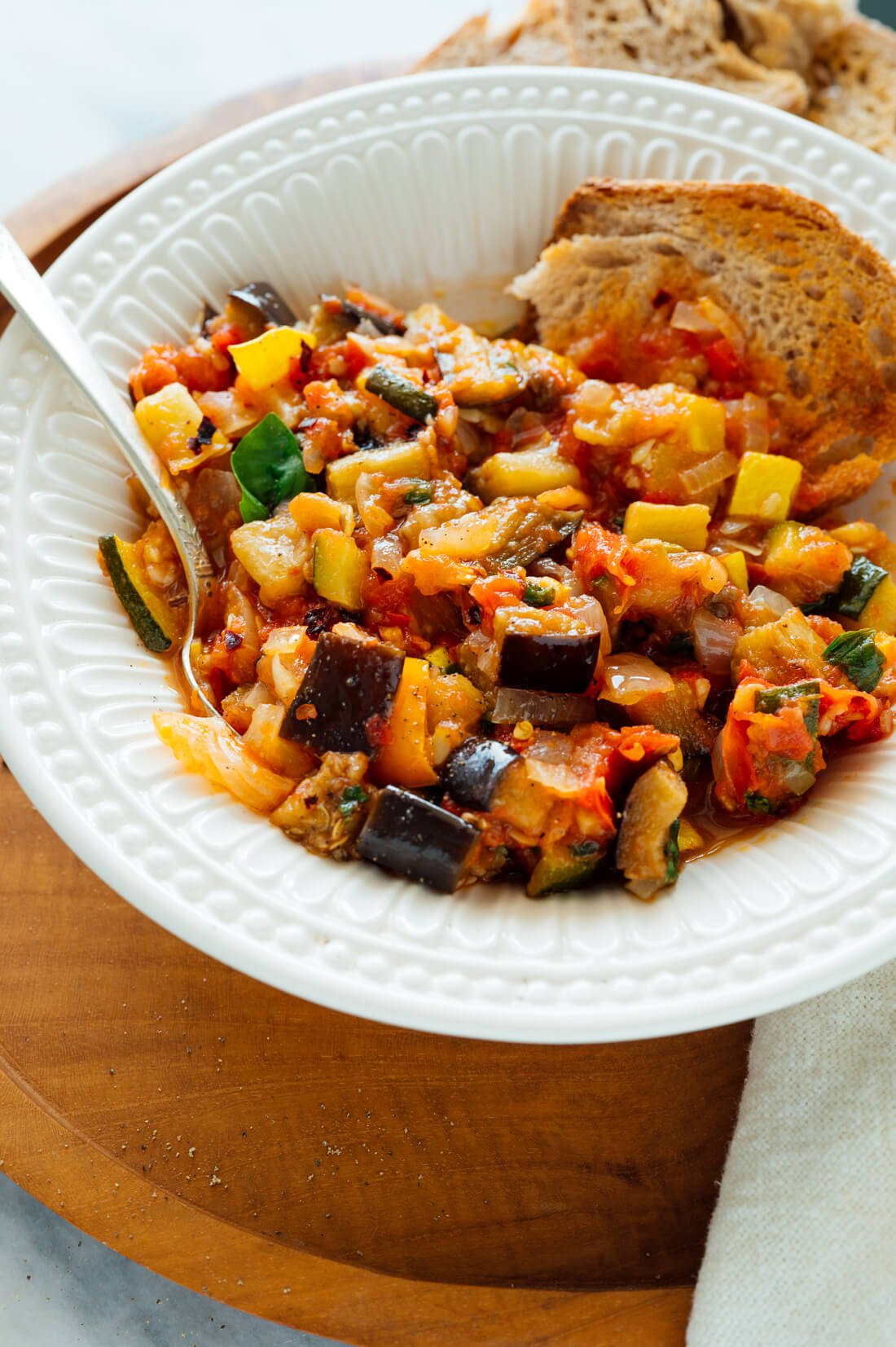It’s ratatouille season! Ratatouille is a classic end-of-summer French stew that’s fun to say (rat-tuh-TOO-ee) and fun to make. It’s packed with fresh produce: tomatoes, eggplant, zucchini and yellow squash, and bell pepper. This summer, we sampled authentic French ratatouille in Provence. I liked some ratatouille more than others, so I vowed to come up with my own favorite ratatouille recipe when I came home. Today is the day!
In Provence, ratatouille is typically cooked on the stove. Each vegetable is cooked in olive oil until it’s properly tender. In the end, all of the ingredients are combined and simmered to meld the flavors. The French know how to cook, and this concept is definitely one to follow. Ratatouille combines a large volume of late-summer vegetables that have different cook times. If you tried to throw them all into a pot at once, none of the veggies would have a chance to caramelize, the eggplant would fall apart by the time the zucchini is tender, and your ratatouille would probably never meet its full potential. This recipe is a little different. We’re going to roast the vegetables until they’re deliciously caramelized on the edges and a little dehydrated (no squeaky or mushy zucchini here). Then, we’ll add those perfectly roasted veggies to a simmering fresh tomato sauce. This method yields amazing ratatouille. My husband says it’s the best he’s ever had. It’s also easier to make than proper stovetop ratatouille, since it requires less time standing over the stove. Hooray!
5 Reasons to Love Ratatouille
Ratatouille Ingredients
This recipe features traditional ratatouille ingredients, which are:
Fresh Tomatoes
Fresh tomatoes are key for making ratatouille that tastes fresh and lively, not dull and heavy. We’ll grate the tomatoes (or blitz the in the food processor) and cook them with onion and garlic to make an irresistible tomato sauce. I tried this recipe with canned tomatoes and it didn’t taste nearly as nice. You can do it if you have to (use one large 28-ounce can of crushed tomatoes), but fresh tomatoes really are best.
Eggplant
Eggplant is known for being difficult to prepare, but it’s easy to roast! No salting necessary. The oven takes care of everything.
Zucchini & Yellow Squash
I love the visual combination of green zucchini and yellow squash. If you want to use two of one type instead of both, no problem.
Bell Pepper
Take your pick from red, orange or yellow bell pepper.
Olive Oil
Extra-virgin olive oil deserves a shout-out. We’re only using as much as necessary, so this ratatouille is not greasy like some can be. Tossing the vegetables lightly in oil raises their surface temperature, which helps us achieve those delicious caramelized edges. Finally, stirring a teaspoon of olive oil into the pot offers some extra richness and herbal flavor. Don’t skip it!
Fresh Basil & Seasonings
We’ll finish off our ratatouille with a handful of chopped basil, which livens up our stew with fresh flavor. We’ll also add a sprinkle of dried oregano—crumble it between your fingers as you add it to wake up the flavor. Then, add salt and pepper until your ratatouille tastes completely wonderful.
How to Make Ratatouille
You’ll find the full rundown in the recipe below. Don’t be intimidated by the length of the recipe—it’s not hard. Here’s the gist:
Watch How to Make Ratatouille
Ratatouille Serving Suggestions
Ok, one more reason to love ratatouille—you can serve it so many different ways! Here are a few ideas:
Serve ratatouille as a stew, with crusty bread on the side. Toasted if you wish. Serve it over freshly cooked pasta. So good. Leftovers make a great breakfast. Just add cooked eggs: fried, scrambled or poached. Turn it into an appetizer by piling spoonfuls onto toasted baguette.
You might enjoy a sprinkle of grated Parmesan or mozzarella over any of the above.
Suggested Equipment
You probably have the proper equipment in your kitchen already. Here’s what you’ll need (these are affiliate links):
Two large, rimmed baking sheets for roasting your vegetables. These pans (called “half-sheet pans”) are the perfect size for roasting one pound of diced eggplant without overlap. They are what all professional recipe developers use, they’re inexpensive, and I swear by them. Cheese grater or food processor for breaking down the fresh tomatoes. Dutch oven or heavy-bottomed soup pot for the stovetop.
Please let me know how your ratatouille turns out in the comments! It’s a little labor intensive, as all good ratatouilles are, but I hope it proves 100 percent worth the effort. Looking for more delicious late-summer recipes? Here are a few of my favorites:
Caponata Double Tomato Pesto Spaghetti with Zucchini Noodles Heirloom Caprese Salad Layered Panzanella Salad Vegetable Paella

